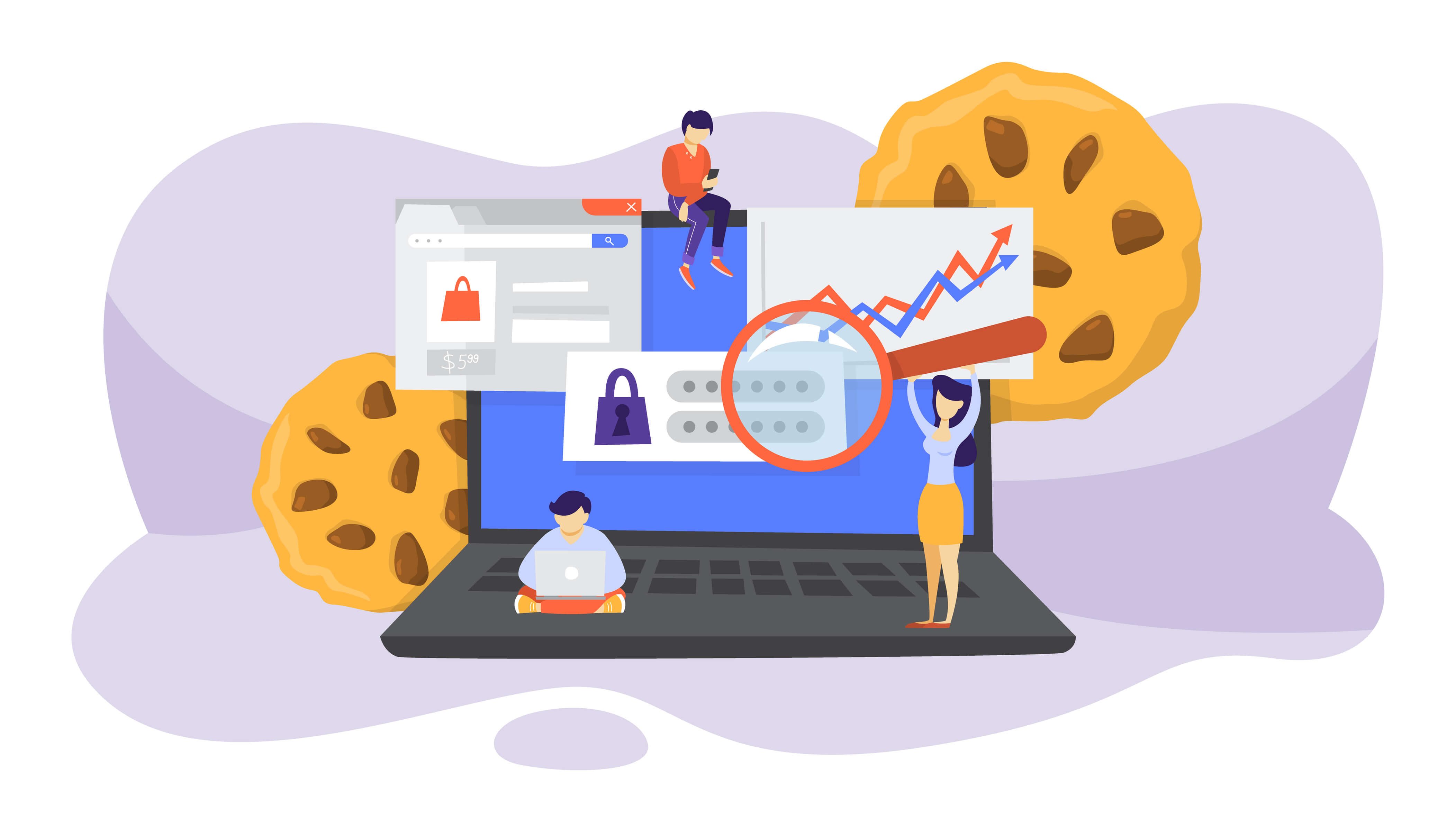Preparing and partnering with content, product and service providers into the “cookieless” future
Brian Roskamp is a software engineer at AdvantageCS.
What are third-party cookies?
To better understand these cookies, allow me to set the stage…
A few months ago, I was shopping for a new mattress. As a prudent consumer, I researched the various mattress brands, models, and retailers. Once I compiled a list of mattresses, to narrow down the list even further, I visited several retailer websites to read customer reviews and find the best prices.
Once I had my list completed, I took a break to prep dinner. I opened my favorite cooking website to reference the recipe I had planned and, wouldn’t you know it, the site was littered with ads for mattresses. Now, this wasn’t a surprise--I’m accustomed to being targeted with highly personalized ads.
However, weeks later and long after I completed my purchase, occasional mattress ads still continued to show up. They’re a little annoying, even a bit invasive, but I’m used to this and recognize that occasionally there may be an ad for something I’m actually interested in purchasing; something that I probably wouldn’t have found otherwise.
Even though, the question remains: How did this completely unrelated cooking site suddenly know to target me with mattress ads?
The answer: third-party tracking cookies.
Websites integrate with third-party services which, in turn, save cookies to your browser to remember who you are. They are used to track where you’ve been and what you’re interested in. These cookies can be used for any number of purposes, including ad targeting (as in the scenario above), user analytics and CAPTCHAs (anti-spam), to name just a few.
For now, that is…

What’s next?
Third-party tracking cookies are quickly falling out of favor. With users becoming more cognizant of their online privacy and with new regulations coming into force, the major web browsers have begun deprecating third-party tracking cookies over the past several years. Firefox and Safari, for example, have already disabled them by default. Google Chrome has plans to follow suit, with a complete deprecation currently planned for late 2023.
So now the question is: With third-party cookies going away, how will you target your marketing and advertise to your current or potential customers?
Will ads suddenly disappear from the web? That’s doubtful.
Will marketers have to switch from analytics and data-driven strategies to random guessing? Unlikely.
Ads will still be around. Analytics aren’t going anywhere. There are several successors to third-party cookies in the works. Some act more like replacements, tracking individual users around the web, just with an added layer of privacy. Others act as new alternatives: rather than having third-party services act as intermediaries, the relationship between you and your customer takes center stage.
Same old, same old: User-Level Identifiers
With user-level identifiers, users are individually tracked via a unique, universal ID. Much like the current third-party cookie approach, this ID is sent to the third parties, which can then track the user across the web.
Major web browsers have stated that they will not implement a browser-level unique ID. This means it’s up to the content, product or service provider to generate the ID for each user and share the ID with third parties. In most cases, the ID is a piece of user information, like an email address or phone number, that’s hashed (to ensure anonymity) before sending to the third party.
Browser is king: Privacy Sandbox
With Privacy Sandbox, an initiative started by Google, the web browser takes a more active role. The browser collects data about the user, but the individual personal information is never exposed to third parties. The browser only allows sellers and third parties to access aggregated and anonymized data, which they can then use to fill the marketing needs that tracking cookies once met, but at the same time ensure that each individual user’s privacy is protected.
What’s old is new again: Contextual Advertising

With contextual advertising, ads are served based on content, not based on everything a user was looking at 5 minutes, 5 days, or even 5 weeks ago. If this sounds familiar, it’s because it is! Contextual advertising has been around since the early days of the web in the form of keyword advertising.
Rather than relying on the advertising company knowing what users were doing earlier, publishers tell the advertiser about the content, and they subsequently serve up ads related to that content.
Returning to the mattress shopping and recipe site scenario: If I’m looking at a recipe trying to prepare dinner, it’s unlikely that an ad will convince me to switch gears and start shopping for mattresses again. However, if the ads on the cooking site are cooking-related (perhaps for an online grocery delivery service or a specific piece of equipment called for in the recipe), it’s much more likely that I’ll be interested in clicking on that ad.
You know me better than that: First-Party Data
With first-party data, the relationship between the seller and the customer is key. Rather than relying on a third party to collect data, sellers leverage the trust garnered with customers to collect data. As an added benefit, the data collected directly from the customer is often more specific, more relevant, and more accurate than the data collected by third parties.
As a seller, you often have more opportunities to collect data. Rather than merely relying on interactions on the web, your business model may offer additional touchpoints, like a call center or a conference. Even on the web, you’re often better positioned to collect the data from your customers and even offer incentives for it, such as access to special content or discounts.
Once you have this data, you can provide the customer with a tailored experience. Returning to the mattress shopping scenario above: If I’ve already bought my mattress, regardless of how many emails I get in the coming weeks and months, it’s unlikely that I’ll buy another mattress. If, instead, I receive emails for pillows or curtains or dressers, all suited to my style preferences, I’m much more likely to click through.
AdvantageCS is here to partner with content, product and service providers
The next year and a half are sure to require a shift in the industry. While it’s unlikely that any one approach will be a complete replacement for third-party cookies, it’s clear that the relationship between sellers and their customers will be essential. Unfortunately, third-party cookies are more of a “one-size-fits-all” solution, whereas the future will likely require a multi-pronged approach (e.g. one approach for ad targeting and another for analytics).
If one were to guess, first-party data will likely emerge as the preferred method of continuing targeted advertising without the use of cookies. With third-party cookies, it is easy to offload audience tracking and data collection, but this will no longer be the case. Sellers will now have to play a more active role in developing and maintaining customer relationships, collecting their own data in the process. Actually, AdvantageCS clients who offer subscriptions to their content, products or services are uniquely positioned for the cookie-less future because they already have a long-term relationship with their customers.
While there are plenty of questions still to be answered while preparing for the day that tracking cookies are completely abolished, now is the time to begin preparing for this change. And, whether you need help strengthening customer relationships, addressing technical matters, or analyzing data, AdvantageCS is here to partner with you.
Following are some of the many ways in which AdvantageCS can provide support to sellers during this transition:
- Collecting and storing first-party data. Advantage already has multiple customer "touchpoints" to capture and store customer data, specifically through questionnaires and extended fields. In fact, Advantage’s extended field feature gives sellers the power to record information beyond what is typically thought of as demographic information, such as the number of times a customer has called, if they have pets, etc. Data can also be captured by call center representatives using the Advantage application. Furthermore, Cider, our eCommerce platform, collects data and analytics from online shoppers.
- Developing integrations. Cider has support for third-party analytics solutions (namely Google Analytics and Adobe Analytics) and AdvantageCS can partner with clients to develop additional analytics integrations. The same is true for the Advantage application, which has business intelligence (BI) support, enabling the extraction of metrics and data in the ways that are most meaningful to your organization. Integrations could also be developed to either pull data into Advantage from third-parties, or alternatively, push Advantage data out to third parties.
If you’d like more information about how AdvantageCS can help you navigate the cookie-less future, please contact us.